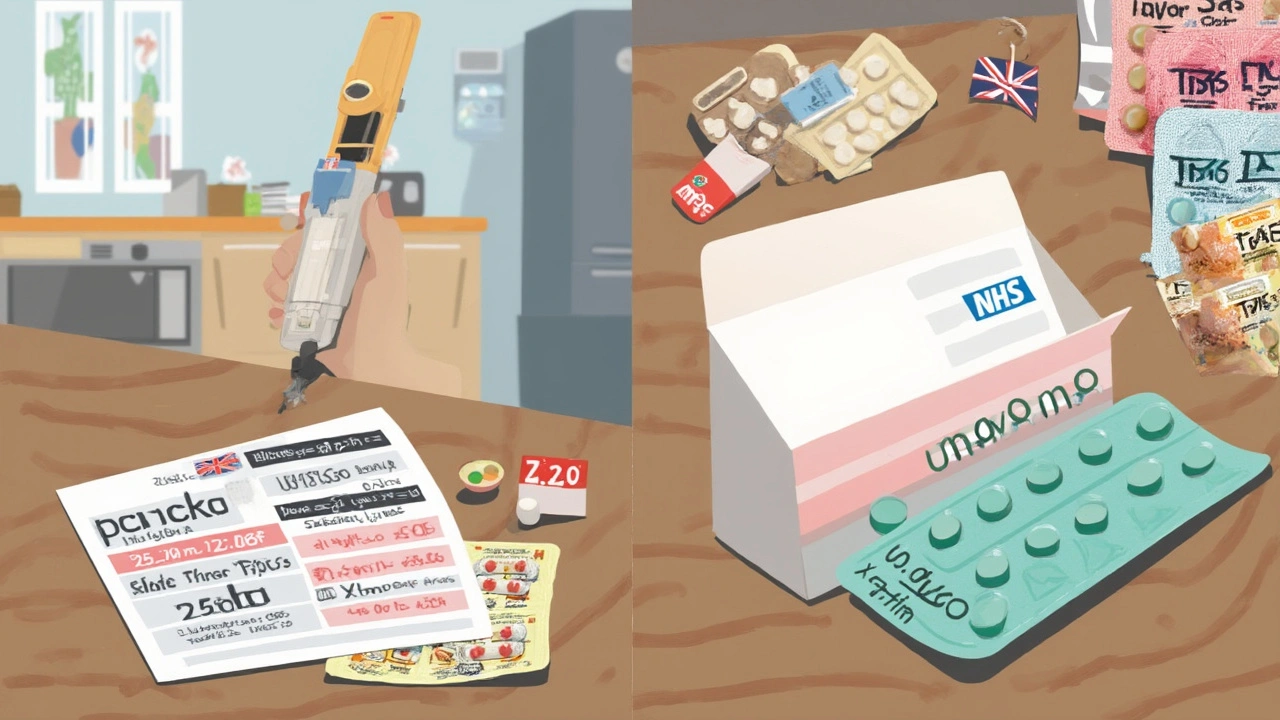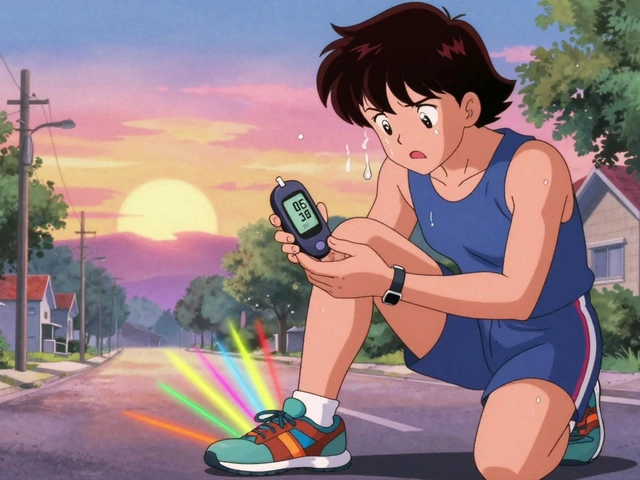The Latest on PCSK9 Inhibitors: What Sets Them Apart?
PCSK9 inhibitors have stormed into the world of cholesterol-lowering therapies with high expectations, but also some confusion. Urban legend has it that these drugs melt away cholesterol like magic—think lipids in a microwave. But here’s the real story in 2025: PCSK9 inhibitors, including big names like alirocumab and evolocumab, are monoclonal antibodies that shut down the PCSK9 protein, a key player in keeping LDL receptors out of action. With that protein checkpoint disabled, your liver can pull bad LDL cholesterol out of the blood faster than ever.
The numbers are impressive. In recent clinical trials published this spring, evolocumab dropped LDL by an average 58%—even for patients already on maxed-out statin doses. Alirocumab performed almost identically. A meta-analysis in the European Journal of Cardiology reviewed over 80,000 patients and found cardiovascular events, like major heart attacks, dropped by about 15% in those using PCSK9 inhibitors compared to placebo.
Where these drugs really shine is in tough cases: people with familial hypercholesterolemia (that’s the genetic version), or those who just don’t tolerate statins, either due to muscle pain or liver worries. In these groups, dropping LDL from stubbornly high to heart-attack-minimizing levels can be life-changing. And these antibodies, being lab-made proteins, don’t get processed in the liver like statins do, so they sidestep many of the worst statin side effects.
You inject these drugs, usually in the belly or thigh, once every two or four weeks. Easy? For some, yes. For injection-phobics, not so much. Even if you’re okay with needles, there’s the faff of handling pens, refrigeration, sorting prescriptions, and booking home nurse visits if you’re squeamish. Clinics have improved home training programs, with video walkthroughs and live support lines, but the habit still hasn’t caught on like once-a-day pills.
Side effect questions do come up. Most people tolerate PCSK9 inhibitors pretty well. Occasional injection site rashes, cold-like symptoms, or muscle soreness show up in less than 5% of cases, according to the latest real-world registries. Major complications? Super rare—no higher diabetes rates, no weird brain problems found after years of use to date.
People also ask: do these drugs play nicely with diets, statins, fibrates, or ezetimibe? The answer’s mostly yes. PCSK9 inhibitors work great as add-on therapy, so you can keep your lifestyle fixes and oral meds, then slot in injections for that stubborn LDL spike. Some docs have started pulsing them (using on and off cycles) for patients who just need them to get cholesterol back on track after blips in diet or life. Flexibility is much better than back in 2020, when rigid, continuous use felt like the only game in town.
So yes—they’re potent, flexible, and safe for most. But now, let’s talk about where things get stickier: convenience and cost.
Cost Breakdown in 2025: What Are You Really Paying For?
The sticker shock of PCSK9 inhibitors used to hit harder than a Manchester downpour. In the early days, UK list prices for a year of treatment hovered near £4,500, and US retail rates crept past $14,000 annually. That made health systems and private insurers squeamish about approving these drugs for anyone but the sickest patients. So what’s changed in 2025?
Now, with biosimilar competitors entering the ring and several manufacturers negotiating deals with health services, prices have finally started to ease. NHS patients in England can sometimes get PCSK9s for under £180 a month (that’s with quality-adjusted life year, or QALY, discounts in play for people at highest cardiovascular risk). Private insurance rates vary wildly, but typical out-of-pocket in the States is about $350 per month if you’re on a high-deductible plan.
Here’s a quick breakdown of what you might pay:
| Plan Type | Estimated Monthly Cost (GBP) | Estimated Annual Cost (GBP) |
|---|---|---|
| NHS (England, high-risk) | £70 - £180 | £850 - £2,150 |
| Private Insurance (UK/US) | £120 - £300 | £1,450 - £3,600 |
| Uninsured (retail) | £300 - £1,000 | £3,600 - £12,000 |
Special assistance programs do exist. Some drugmakers offer co-pay cards, and NHS Trusts will sometimes prioritize access for patients with prior heart events. Still, this is not a "try it and see" medicine if you’re cost-conscious. The big win? Street prices for these injectables just dropped 18% since 2023, according to a MedData pricing report. That’s progress.
For people who need to shop around, there’s a lively gray market (and some reputable international pharmacies) offering biosimilar PCSK9 options at lower rates. But buyers need to check for licensing and regulatory stamps to be safe—counterfeits do turn up. One must-read resource for patients considering different therapies (especially if you’re wondering how PCSK9 stacks up next to other cholesterol meds) is this overview of alternatives to atorvastatin. Many people find that careful tweaks with older meds can accomplish almost as much LDL lowering, at a fraction of the PCSK9 price tag.
Remember, cost is more than what comes off your payslip. There’s value in regular monitoring, nurse visits, and support—services that aren’t always available with bootleg or non-prescribed supplies. And monitoring is crucial, especially for anyone switching from statins or with pre-existing heart disease.

Measuring Convenience: The Human Side of PCSK9 Injectors
If you’re used to popping a daily pill, moving to a self-injected biologic might sound dramatic. It’s not just the jab—there’s the prep, the paperwork, the home fridge suddenly hosting your medicine, and synchronising your schedule with the drug’s cycle.
In 2025, device makers have tried to make the process painless. Autoinjector pens “click” in and out in two seconds, no visible needle at all, and some devices even track usage through Bluetooth links to your smartphone (so you never miss a shot). Patients can set reminders or share compliance logs with their GP. Some of the newer models have made a big difference for those with arthritis or vision problems, earning good reviews from both older adults and people who sometimes struggled with insulin management.
Training remains a sticking point. If you’re new to injectables, NHS clinics and major UK pharmacies now run online group sessions where a nurse walks everyone through the first self-injection on camera. Private insurers sometimes cover in-home tutorial visits. Still, surveys from the British Heart Foundation in March 2025 report that just under a quarter of people on PCSK9s needed two or three tries before feeling fully confident wielding the pen.
Disposal matters too. You can’t just bin the needle—special sharps containers are a legal requirement in most parts of the UK. Pharmacies and GPs will supply these and collect them monthly. There’s plenty of confusion around travel, too. PCSK9 injectors are technically liquids, and must stay cold, so if you’re flying Ryanair or packing for a festival, you’ll want a cool pack and a doctor’s letter to clear airport security. Border agents in some countries want confirmation the drug is prescribed, so always pack the original box and your latest prescription slip.
What about integrating PCSK9s with other routine meds? Most people can keep their statin, even if it’s “low and slow.” There’s emerging data that layering ezetimibe, bempedoic acid, or “old school” niacin with PCSK9s allows for substantial LDL reductions without maxing out the dose of any single drug. Those combos often spare you from stacking up side effects.
The convenience debate usually gets personal: Small hassle for big cholesterol gains? For high-risk heart patients, the math typically works. Younger, prevention-focused users tend to hesitate unless their LDL is unfixable by other means—and that’s fair. The tech keeps improving, but PCSK9s are not yet grab-and-go for everyone. If you’re aiming for “low effort, high impact,” talk through all options before settling in for a life of fortnightly jabs.
Cardiovascular Outcomes: What’s the Payoff in Real Life?
It all comes down to heart outcomes—lowering cholesterol is nice, but does it actually save lives or stop heart attacks long term? Let’s look at what the data says by 2025.
Long-term studies mark an interesting shift: In the ODYSSEY OUTCOMES trial (spanning six years, updated findings out this January), patients getting alirocumab after a heart attack had a 24% reduced risk of further cardiovascular events compared to standard care. The FOURIER trial with evolocumab pushed similar benefits, with a 15% cut in heart attacks and strokes, even among groups already taking strong statins. Importantly, these benefits held up even when LDL was driven lower than ever thought possible—as low as 0.8 mmol/L in some patients, without triggering new neurological or bleeding risks.
There’s fresh real-world registry data, too. Medway NHS Trust published two-year outcomes in high-risk patients: average LDL drop was 57%, and heart event rates fell by almost a third compared to matched folks not getting PCSK9s. Interestingly, the biggest impact is seen in those with genetic cholesterol disorders or repeat heart attacks—people the standard pills just can’t help enough. For people who have never had a heart event but carry crazy-high LDL, the long-term heart attack risk shrinks dramatically.
Doctors are still debating what this means for lower-risk, prevention-driven individuals. Massive LDL drops look great on paper, but if your 10-year heart risk is already low, piling on expensive therapies may not add much benefit. For the highest-risk folks, though, PCSK9s may be a literal lifesaver.
Adherence is another under-appreciated factor. Missed doses can let LDL rebound, so reminders are key—and the latest digital pens help there, as do NHS text reminders and pharmacy apps. Some patients have gone from multiple heart attacks in their 50s to problem-free 60s with three years on a PCSK9 plus background statin.
Cognitive side effects, much feared early on, haven’t materialised in large numbers. No big difference in memory loss or confusion compared to placebo or even other cholesterol-lowering drugs. There’s a slight uptick in mild injection site reactions—about 4–6%—but very few people stop the drug for that alone.
If you’re wondering whether PCSK9s are more effective before or after a stent, or in combination with blood thinners, research now confirms these drugs are agnostic—they don’t interact with most common cardiac meds. That gives doctors more freedom to tailor your mix.
Still, questions linger about lifetime use: Should someone in their 30s with inherited cholesterol stay on this for life? Some docs recommend occasional “drug holidays,” but evidence isn’t robust yet. Constant review with your cardiologist is a must. Ongoing NHS cost-utility studies may eventually let more moderate-risk patients get coverage if long-term heart savings pan out.








I started on alirocumab last year and honestly? It’s been a game changer. My LDL dropped from 190 to 62 in 6 months. 🙌 The injections are weird at first but the auto-pens are so smooth now. No more panic. I even got a little fridge just for it-kinda cute? 😅
The data is solid but I still think we’re overprescribing these. If you’re not a genetic case or post-MI, maybe try ezetimibe + high-dose statin first. Less hassle, less cost. Not everything needs a biologic.
There's a glaring omission here: no mention of the 2024 FDA warning regarding potential immune-mediated myopathy in patients with pre-existing autoimmune conditions. While rare, it's documented in the FDA Adverse Event Reporting System. Always disclose comorbidities before initiating therapy. This article reads like an ad.
For anyone scared of needles-just do it once with a nurse. The pens are like a tiny robot arm that clicks and you’re done. No pain. No blood. I did mine in the car while waiting for my kid’s soccer practice. 🚗💉 My LDL’s been stable for 18 months. Worth every penny. Also, the Bluetooth app tracks your doses. I get a notification if I miss one. So helpful.
ok so i tried the evolocumab and honestly at first i was like nope nope nope but now its just part of my routine like brushing my teeth? i even named my pen benny 🥹 the fridge thing is kinda annoying but my mom helped me set it up and now we have a little medicine corner. also the text reminders from my pharmacy are cute they say "benny says hi! dont forget your shot!" lmao
I just got mine covered by insurance and I’m already bored. Like… it’s a shot every two weeks. I could’ve just eaten more oatmeal. Why is this so expensive if it’s just a protein? Also why do I need a whole fridge for this? I’m not storing wine.
I’ve seen this work in my clinic. One patient, 68, had three stents by 55. After starting PCSK9, no new events in 4 years. But the real win? She stopped being terrified of her own body. That’s harder to measure than LDL numbers.
In the UK, the NHS has made it way easier than it was. My GP sent me a free sharps bin and a QR code for a video tutorial. The cost? £110/month under the high-risk scheme. Still pricey but at least it’s not £300. Also, the pens are quieter now. Less scary.
I’m from India and we don’t have access to these drugs yet. But I’ve been following this closely. If these can cut heart attacks in people with familial hypercholesterolemia, it’s a revolution. Hope they become affordable globally soon. Maybe biosimilars from India will help? 🙏
I’ve been on this for three years now and I can’t believe how much my life has changed. Before, I was constantly worried about my numbers, even if I was eating clean and working out. Now I just take my shot, go about my day, and forget about it. I even started hiking again. My cardiologist says my arteries look like they’re 30 years younger. It’s not magic, but it’s close. And honestly? The fact that I don’t have muscle pain anymore? That’s worth more than money. I used to hate doctors, now I look forward to my appointments because I actually feel better. It’s not just about the cholesterol-it’s about peace of mind.
The cost drop is real. My out-of-pocket went from $700 to $320/month. Still a lot, but I’m glad biosimilars are here. Just wish the delivery system was more like a pill. I still feel weird carrying a pen in my purse.